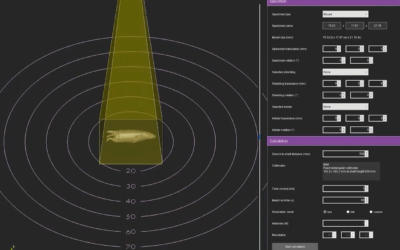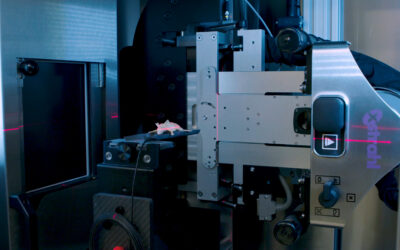[:us]Publication/study:
Design, Implementation, and in Vivo Validation of a Novel Proton FLASH Radiation Therapy System
Authors:
Eric S. Diffenderfer, PhD, Ioannis I. Verginadis, PhD, Michele M. Kim, PhD, Khayrullo Shoniyozov, PhD, Anastasia Velalopoulou, PhD, Denisa Goia, MS, Mary Putt, PhD, Sarah Hagan, MS, Stephen Avery, PhD, Kevin Teo, PhD, Wei Zou, PhD, Alexander Lin, MD, Samuel Swisher-McClure, MD, Cameron Koch, PhD, Ann R. Kennedy, PhD, Andy Minn, MD, PhD, Amit Maity, MD, PhD, Theresa M. Busch, PhD, Lei Dong, PhD, Costas Koumenis, PhD, James Metz, MD, and Keith A. Cengel, MD, PhD
Key Findings:
Previous studies have shown that ultra-high-dose-rate, ‘’FLASH’’, electron radiation therapy (RT) can more successfully target tumors while limiting damage to surrounding normal tissues, compared with conventional dose rate RT. Likewise, earlier research demonstrates that proton radiation therapy (PRT) can improve spatial dose delivery compared to photons or electrons. In this study, researchers used SARRP and a mouse model of combined syngeneic heterotopic pancreatic tumors and upper intestinal track injury to study the effects of a new proton FLASH radiotherapy (RT) system, with the goal of better understanding the resulting biological effects.
Researchers constructed a unique apparatus that could administer RT using double scattered protons with computed tomography guidance and found evidence—the first of its kind—that compared with standard PRT, FLASH PRT elicits reduced levels of both acute and chronic gastrointestinal damage. Despite this, FLASH-PRT did not demonstrate tumor radioprotection of pancreatic cancer flank tumors in the same mouse model.
In other words, researchers confirmed another modality where FLASH dose rates succeed in targeting malignant cells while sparing surrounding tissue. At the same time, they demonstrated that FLASH PRT elicits significantly reduced intestinal fibrosis compared with standard PRT. These findings show the potential, in clinical usage, for significantly improving the outcomes for certain abdominal cancers in humans, where treatments typically have been inhibited by severe toxicity from high RT dosages.
The Value of SARRP:
In this specific study, as with all studies involving FLASH biology, it’s imperative to ensure that both dosimetry and dose administration are delivered with extreme precision. This is how researchers can be confident that any observed biological differences arise solely from dose rate and not total dose delivered.
All irradiations in this study involved the use of the SARRP to provide “vertical and horizontal lasers aligned with the proton beam center”, and then “employed custom 3-dimensional printed jigs with anesthesia gas ports” to work directly with the mice. The SARRP platform provides the fundamental, pre-clinical environment necessary to configuring a highly targeted experiment where accuracy is of the utmost importance. Furthermore, SARRP offers the flexibility researchers need to adapt RT delivery mechanisms to suit custom research requirements.[:]






